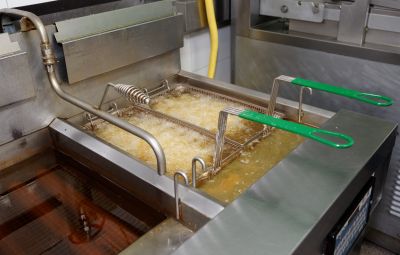Essential Products For Professional Grease Trap Installations
Discover the key products that ensure professional-grade grease trap installations with optimal functionality and longevity.
 Installing a grease trap is a crucial step for many commercial and residential kitchens to manage fats, oils, and grease (FOG) effectively. Properly selected products help prevent plumbing clogs, reduce maintenance costs, and ensure compliance with local regulations. When considering products for grease trap installations, it is important to understand the different types available, their capacities, and how they integrate into existing plumbing systems. Selecting the right components can enhance the efficiency and longevity of your grease management system.
Installing a grease trap is a crucial step for many commercial and residential kitchens to manage fats, oils, and grease (FOG) effectively. Properly selected products help prevent plumbing clogs, reduce maintenance costs, and ensure compliance with local regulations. When considering products for grease trap installations, it is important to understand the different types available, their capacities, and how they integrate into existing plumbing systems. Selecting the right components can enhance the efficiency and longevity of your grease management system.
Types of Products For Grease Trap Installations
Underground Grease Interceptors
Large, buried units suitable for high-volume commercial kitchens, designed to handle significant FOG loads.
In-line Grease Traps
Compact systems installed directly in the drain line, ideal for smaller establishments or retrofit projects.
Portable Grease Traps
Movable units that can be easily relocated, suitable for temporary setups or areas with space constraints.
Gravity-Fed Grease Traps
Passive systems relying on gravity to separate FOG from wastewater, often used in smaller or less demanding settings.
Automatic Grease Removal Devices
Systems equipped with skimming mechanisms that automatically remove FOG, reducing manual maintenance.
Filter-Based Grease Traps
Units that use specialized filters to capture FOG particles, often combined with other separation methods.
Baffle-Style Grease Traps
Designs featuring internal baffles to improve FOG separation efficiency and prevent grease carryover.
Sediment and FOG Separators
Products that combine sediment removal with FOG separation for comprehensive wastewater treatment.
Custom Fabricated Systems
Tailored solutions built to specific site requirements, often involving consultation with manufacturers.
Inline FOG Separators
Inline units installed within existing plumbing to intercept FOG before reaching the main sewer line.
Popular Choices
Widely used in large commercial kitchens for its capacity and durability, supporting high FOG volumes.
Commonly selected for retrofit projects and smaller establishments due to their compact size.
Favored for temporary setups or locations with limited space, offering flexibility and ease of use.
Popular for reducing manual cleaning efforts and maintaining consistent FOG separation.
Chosen for their effective separation capabilities and ease of maintenance in various settings.
Selected for simple installations where passive FOG separation is sufficient.
Often used in conjunction with other systems to enhance FOG removal efficiency.
Popular in settings requiring comprehensive wastewater treatment solutions.
Frequently installed within existing plumbing to intercept FOG early in the drainage process.
Grease traps come in various forms, including underground units, in-line systems, and portable options. Each type is designed to suit specific installation environments and volume requirements. For instance, underground grease interceptors are typically used in commercial kitchens with high FOG output, whereas smaller in-line devices might be suitable for less demanding applications. Proper sizing and installation are key to ensuring the system functions effectively, preventing FOG from entering the main sewer lines.
Maintenance plays a vital role in the performance of grease trap systems. Many products feature easy access points for cleaning and inspection, which can simplify routine upkeep. Additionally, some systems incorporate advanced features such as built-in baffles or skimming mechanisms that help improve separation efficiency. When selecting products, consider compatibility with existing plumbing, ease of installation, and the availability of replacement parts or accessories to support ongoing maintenance needs.
Key Buying Considerations
- Determine the volume of FOG generated to select an appropriately sized system.
- Assess the available installation space, whether underground, inline, or portable.
- Consider ease of access for cleaning and maintenance to reduce operational downtime.
- Check compatibility with existing plumbing and drainage configurations.
- Evaluate the materials used in construction for durability and corrosion resistance.
- Understand local regulations and compliance requirements for grease management systems.
- Review the system's capacity to handle peak FOG loads without overflow.
- Look into features like built-in skimming or baffle designs that enhance separation efficiency.
- Consider the long-term availability of replacement parts and support services.
- Estimate installation costs and whether professional installation is recommended.
- Examine the system's ease of integration with other wastewater treatment components.
- Review user feedback or case studies for insights into real-world performance.
- Account for potential future expansion or increased capacity needs.
- Determine if the system includes monitoring or alert features for maintenance scheduling.
- Ensure the product meets all relevant local plumbing codes and standards.
